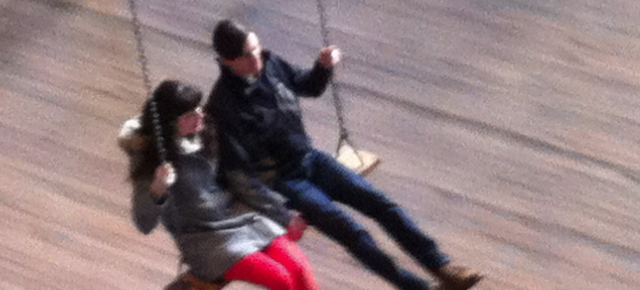Sometimes a demurral speaks volumes, as I discovered at the Metropolitan Museum of Art this weekend. Me and my spouse dropped in to catch Naked Before the Camera, a pocket-sized exhibition of photographic nudes culled from the Met’s own holdings. The show is smart and informative, combining names from the arts canon (Eakins, Brassaï, Muybridge) with works whose original aims had nothing to do with art—some of the more interesting shots are those from medical textbooks, taken to educate physicians on conditions ranging from hermaphrodism to disfiguring tumors).
Seeing art in any form should be a cause for celebration, but more than a few times, a group or a couple would enter this gallery, and a member of the party would excuse themselves with something like, “I think I’m going to wait for you outside.” Often, though, I saw people stop abruptly before entering, as if zapped by one of those electronic Sentry rays dog owners use to keep their pets in line (admittedly, the entrance’s light-bulbed signage, a girly-show come-on, sends a weird mixed signal). I started to draw conclusions—these were Midwestern tourists, I surmised, who see the word, “naked” and get their conformist, God-fearing backs up. Was it embarrassment that kept them from entering this brightly lit sanctum? There was no place to hide; other patrons would be standing right next to you, looking at the same Irving Penn nude, or Robert Mapplethorpe’s famous shot of the kneeling Patti Smith. No doubt viewers would have their own reactions; the fear, as my partner observed, is that they might be studying yours: caught, you’d be, a sinner looking at dirty pictures. What an interesting reminder of shame, dressed up in a morality of the sort that made me flee Ohio, and one you’d hope the big city would give you license to shuck off; it made me think of Jane Fonda’s line to the title character in Alan J. Pakula’s 1971 film Klute: “Did we get to you, just a little bit?” In the case of those skittish museumgoers, not enough, a fact that filled me with sadness.
No one walked out of Fort Blossom, Revisited, John Jasperse’s fine, provocative work that closed this week at New York Live Arts. Their season, filled with revivals of works by major artists, hits a major peak with this exploration, described in the press release as “ a personal look at the body.” In Fort Blossom, the bodies are male and female, but the traditional gaze gets reversed: the nudity on display is male (the two women in the piece are fully clothed), and their comportments are explicitly revealing (simulated anal sex occurs early in the work, and throughout, copious exposure of spread-eagled genitalia, front and back, fully lit). The initial effect is titillation carried to the extreme, until it becomes something else—an examination of intimacy, yes (between men, dancers, audience and performer), but also of the movement possibilities inherent in basic principals of balance, extension and flexibility. Watching the magnificent dancers Ben Asriel and Burr Johnson, you were stuck not so much by their un-self consciousness as their limbs traced patterns across each other’s bodies, leaving no crevice unexplored, but a sense that Jasperse was re-creating the species, presenting an egalitarian view of a world that retired the word “prurient” long along. Notions of gayness, sex between men, propriety, get a do-over here; there is only the beauty of sinew, form and an choreographic imagination willing—daring—us to project beyond the narrow-minded baggage that feels particularly American, one we’ve been served since the DAR proclaimed themselves the New Order. In art, at least, how refreshing to see cooler heads prevail to show us a self we’d not considered; the trick, of course, is to get us to step through the door.
Above, Man Ray, Male Torso (1930); Johnson and Asriel in Fort Blossom, Revisited (photo, Ian Douglas)



